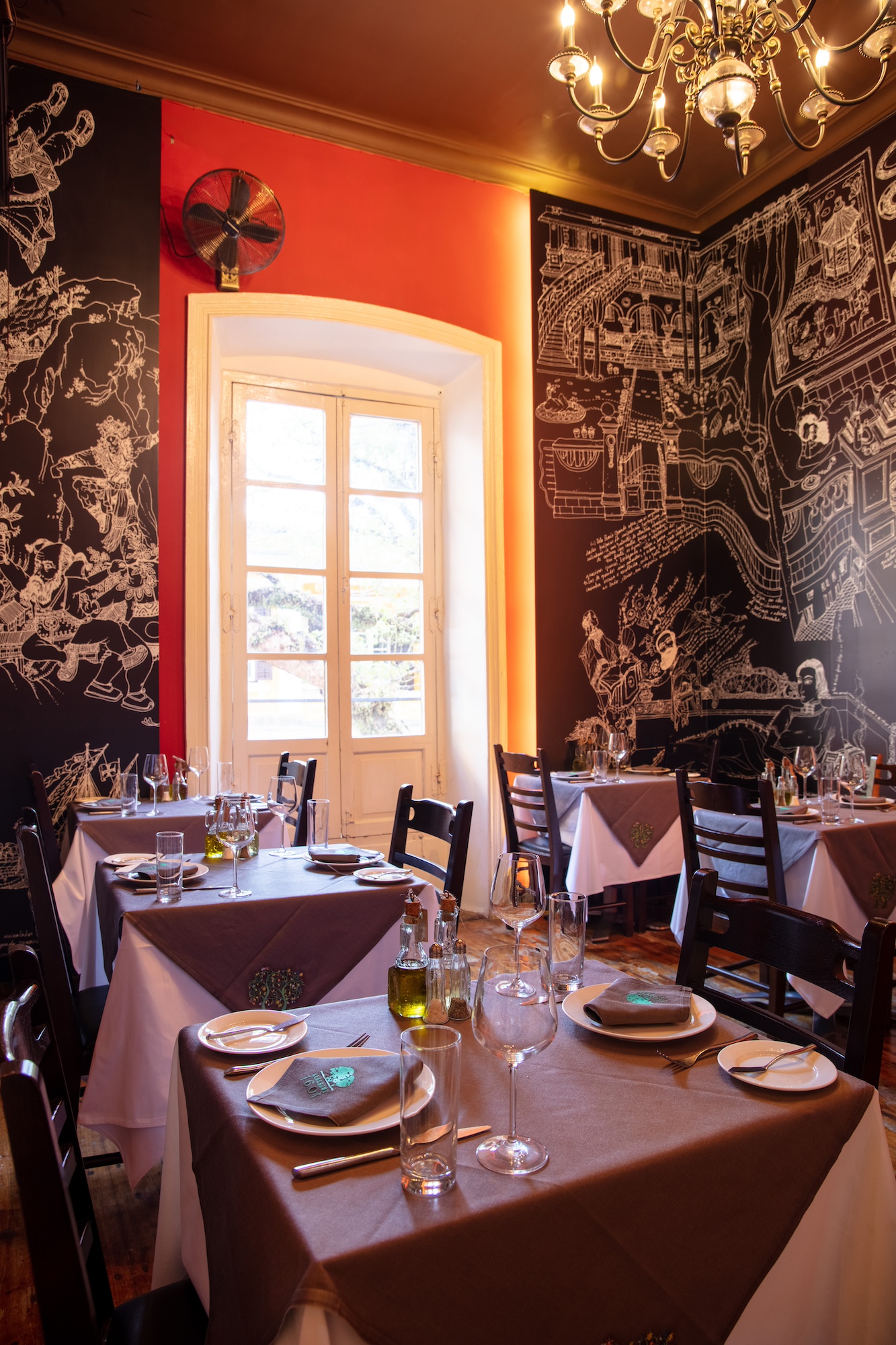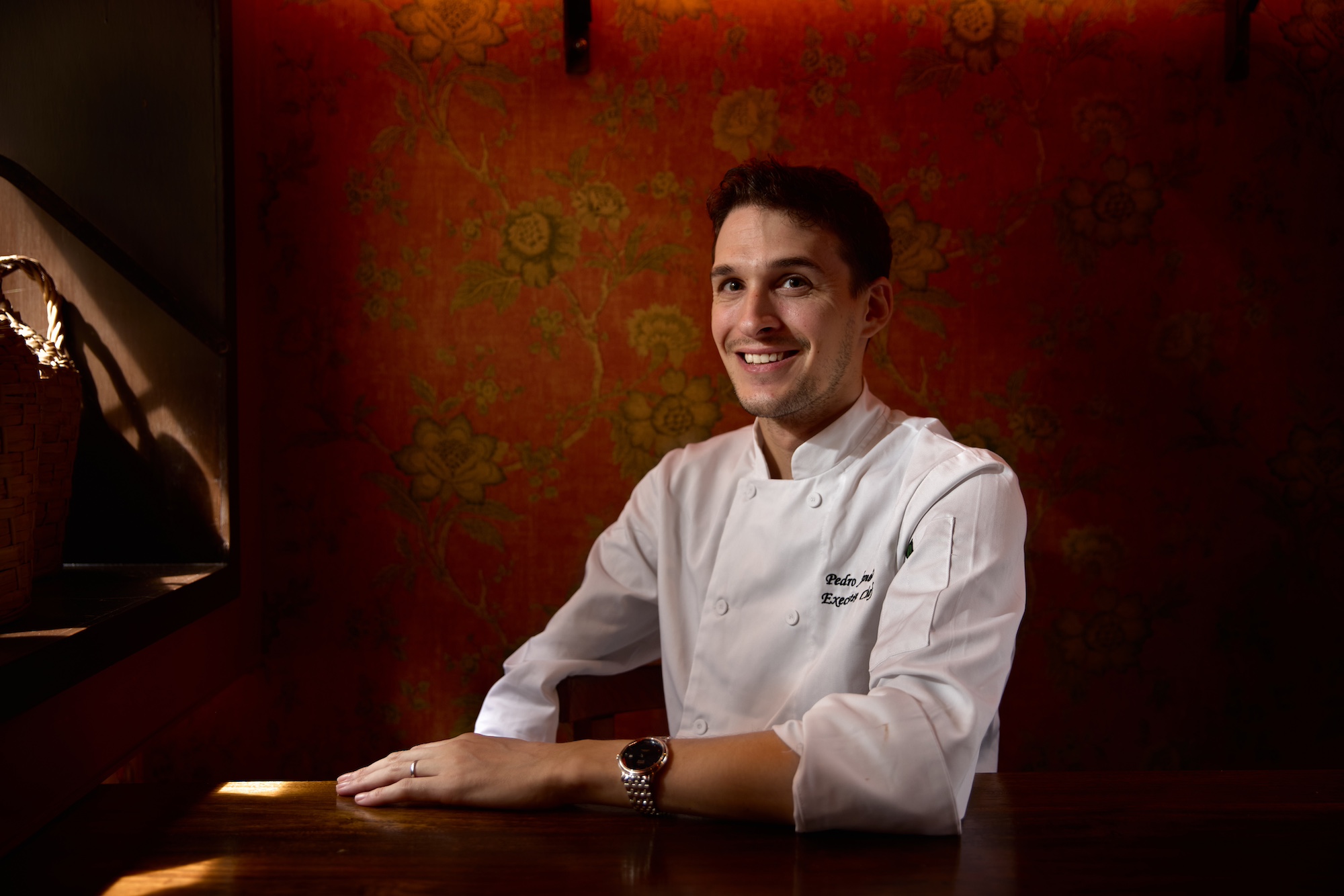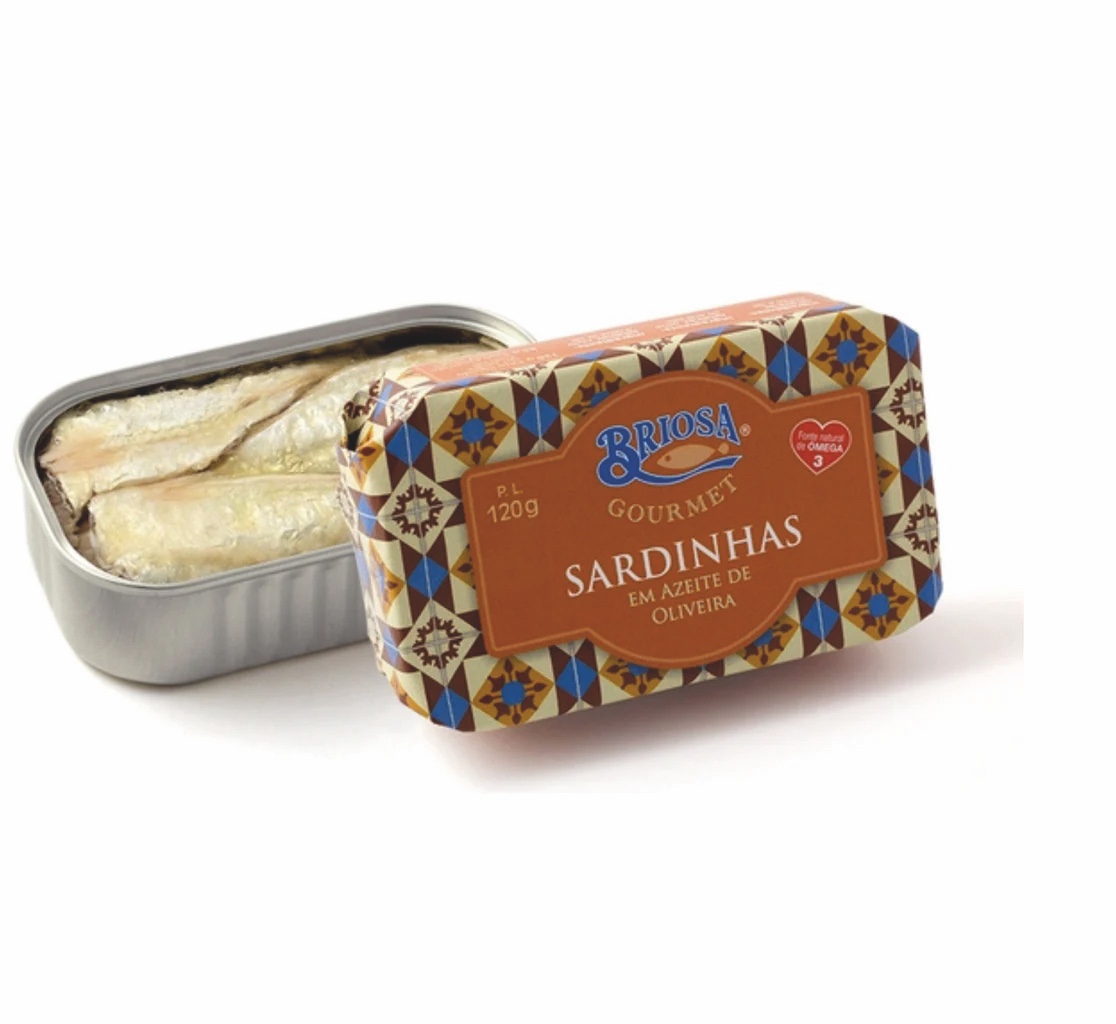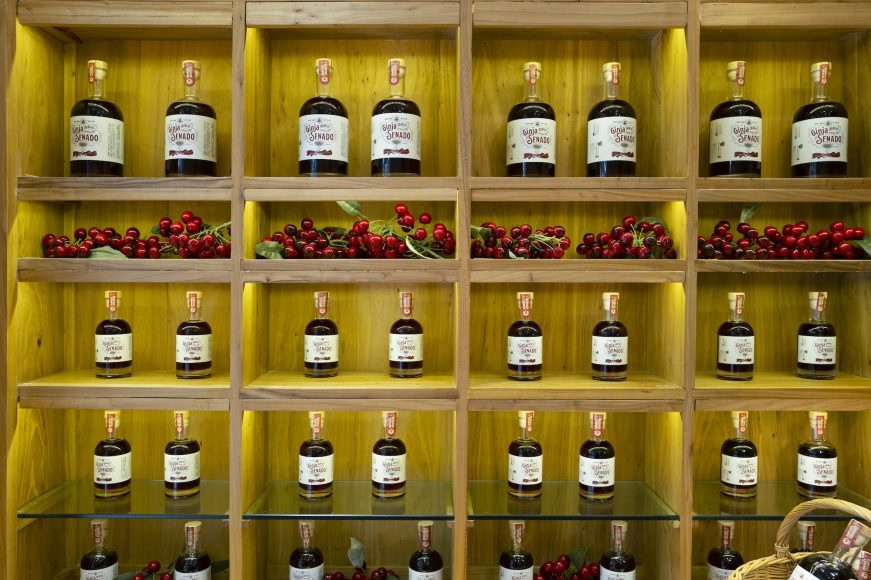The walk from Macao’s Portuguese Consulate to St Lazarus’ Church takes barely five minutes. Each day, tourists and locals stroll between these two landmarks, crossing an invisible border as they go – the place where, centuries earlier, a wall divided the Macao Peninsula. Today, the emergence of artistically laid cobblestones – calçada portuguesa – are all that mark the transition from modern Asian entertainment hub to quaint Lisbon suburb or, Macao’s St Lazarus quarter.
Inside this historic neighbourhood, beneath the camphor trees, you’ll find Albergue SCM (Albergue da Santa Casa da Misericórdia). Once a hostel for war refugees, its low, marigold-yellow buildings now house a creative and cultural hub that includes one of the city’s best-known restaurants: Albergue 1601. Olden day Portuguese paraphernalia lines its lobby; the sounds of guitarra portuguesa fill the halls. The place is popular enough that there’s usually a gaggle of hopefuls at the door, waiting for a table to become free.
“I’m surrounded by history here,” smiles one co-founder of Portuguese Restaurants & Retail Concepts (PRRC), which owns Albergue 1601 and several other eateries in the city. Local resident Asai, who requests to go by first name alone, says all PRRC’s ventures prioritise authenticity. “During my first visit to Portugal in 2012, I instantly fell in love with everything – the cuisine, the people, the culture. When I came back to Macao, I recognised the opportunity to develop a unique culinary experience for a city that shares nearly five centuries of Luso-Asian heritage.”

St Lazarus felt like the right place to develop more such projects. Walking distance from Albergue SCM is 3 Sardines, a Portuguese-style tavern known for its sharing platters and pitchers of sangria. Its customers are also surrounded by nostalgic decor, including six vintage aeroplane seats that once soared the skies with Air Portugal.
Around the corner and up an outdoor staircase, just behind the 17th-century Mount Fortress, the bakery Pasteis de Chaves sells its name-sake meat-filled pastries alongside pastel de natas and pastel de coco (Portuguese egg tarts and coconut cake, respectively).

Asai is proud that, within a small pocket of the city, PRRC offers its patrons the whole gamut of Portuguese fare. “When guests come to St Lazarus, they can ‘depart’ Macao and ‘arrive’ in Portugal, passport-free,” is how he puts it.
O prato do dia: dish of the day
Executive Chef Pedro Almeida oversees the menus of all PRRC’s restaurants. Almeida hails from the northern Portuguese city of Chaves (to which the aforementioned eatery and pastry pay homage). For six years, the expatriate has regularly tweaked his dishes to maintain fresh appeal – while staying true to familiar flavours that satisfy old-fashioned taste buds.
“Everyone is a foodie in Macao,” says Almeida. “We can never be complacent when preparing our dishes.” Asked whether continuous reinvention of traditional fare is a challenge, the chef makes it clear that he sees the process as a labour of love.
PRRC’s emphasis is on authentic food and ambiance, aiming to let its patrons experience Macao’s unique food culture. And it has several new projects on the boil.
The soon-to-open Porto e Lata, a tin can café beneath the iconic Ruins of St Paul’s. There, foodies will have an opportunity to indulge port wine and Portugal’s famous canned seafood amidst nautical surrounds; fishing nets and model rabelo boats contributing to the harbour-side theme.

While the likes of tinned tuna has rather humble connotations in most parts of the world, the Portuguese do it differently. Their stylish conservas are a delicacy: anchovies or sardines in olive oil for instance – forever fresh thanks to the miracles of canning. Portugal’s cannery industry dates back to the mid-19th century and is one of the country’s cherished culinary traditions. The tins themselves feature exquisite artwork depicting what’s within.
At Porto e Lata, diners will be able to enjoy a wide array of conservas served alongside breads, cheeses, and salads.
Another new PRRC specialty shop is Ginja do Senado. This place is dedicated to ginjinha, a Portuguese liqueur made by infusing morello cherries in brandy. The sweet beverage is believed to have roots in 15th-fifteenth century Lisbon, though became a hit a few hundred years later. Ginjinha actually has a historical connection to Macao. At the 1926 Mong-Ha trade fair, the liqueur’s best-known maker – Espinheira – was awarded a medal for its delectable product.
Before too long, PRRC will open a second bakery, this one specialising in the Portuguese sponge cake pão de ló. Similar to the Chinese zhibao dangao in appearance, the European version has a distinctively gooey interior and is baked in a clay pot.
There is another higher-end dining experience in the works, too – marking the group’s first foray beyond the Macao Peninsula. The new restaurant will be in Taipa, inside one of five historic ‘Taipa Houses’ that once housed Portuguese civil servants. It will operate alongside the Macanese Living Museum and the Universal Gallery and Bookstore. Asai and his team are sticking with their tried-and-tested business formula: crafting Portuguese culinary experiences amidst the backdrop of history.
Like Albergue SCM, the Taipa Houses are intertwined with Macao’s East-meets-West cultural identity. They are emblematic of 1920s Portuguese architecture, located next to Our Lady of Carmel Church (erected in 1885) and mere metres away from Tin Hau Temple (a Chinese construction dating back to 1785). The Taipa Houses also featured in Shanghai Surprise, a mid-1980s romantic comedy starring Sean Penn, Madonna and Beatles singer George Harrison.
O prato seguinte: the next dish

Asai says he hopes PRRC’s pão de ló and gourmet canned fish will join the ranks of the pastel de nata in becoming edible ambassadors for Macao’s Portuguese heritage. He likes the idea of souvenirs that rekindle tasty memories of Macao and promote the city’s gastronomic delights from beyond its borders.
PRRC is in the non-edible souvenirs game, too, incidentally. “Macao is truly a hub for acquiring unique items from other PSCs (Portuguese-speaking countries),” says Asai. PRRC has shops dedicated to selling azulejos – Portuguese-style tiles – and Galo de Barcelos (the Rooster of Barcelos) figurines. It also supports Albergue SCM’s seasonal Lusophone Market, where people flock to buy Portuguese wines, Mozambican cashews and coffee beans from Timor-Leste.
These sorts of initiatives are helping boost Macao’s post-pandemic tourism recovery, according to Pamela Chan, managing director of Taipa Village Destination, a marketing company that fosters sustainable heritage developments. “Neighbourhoods like Taipa Village not only offer architectural uniqueness but have sustainable historical draw factors pulling interests in,” she says. Chan describes increasing numbers of tourists filling Taipa’s narrow, pedestrian-only lane, Rua do Cunha as an example. There, they buy souvenirs and fill up on local snacks made directly on-site.
The initiatives also help the city diversify its economy. In fact, the Taipa Houses, is an ideal place to reflect on Macao’s evolution across the centuries. While these pristinely preserved buildings seem almost frozen in time, you can watch the neon lights of Cotai’s casinos light up the night sky from their stately verandas. And, soon, you’ll be able to indulge in exquisite Portuguese cuisine that is as excellent a reason as any to pay Macao a visit.
Bom apetite!



